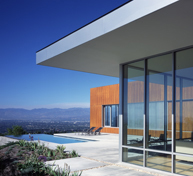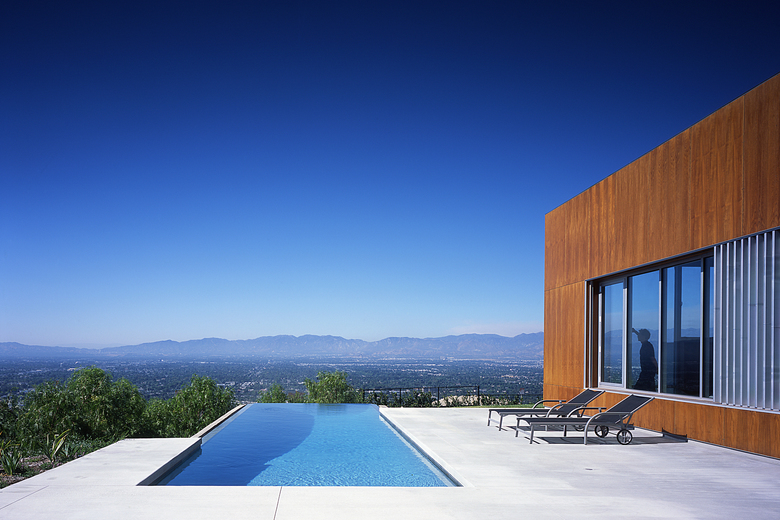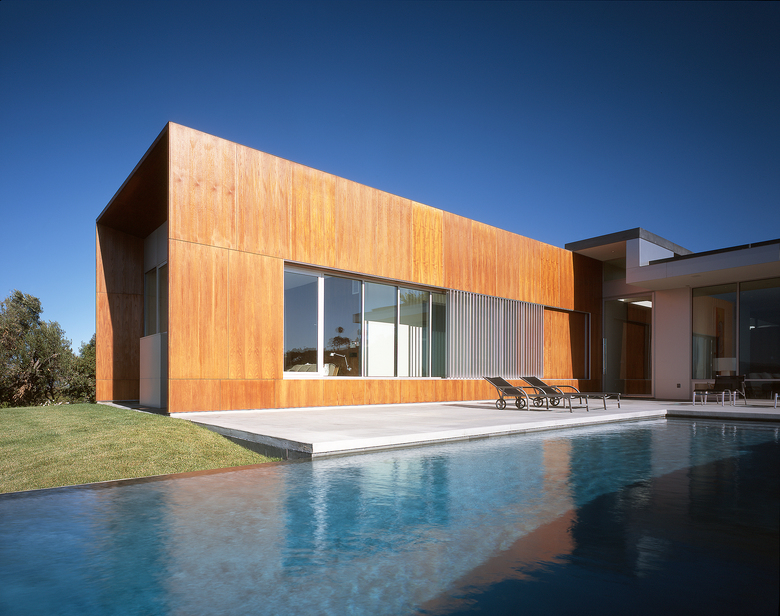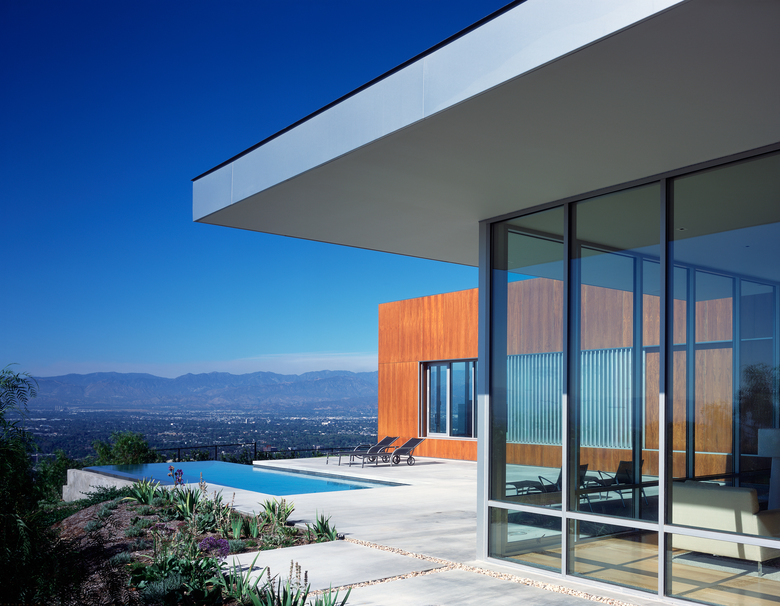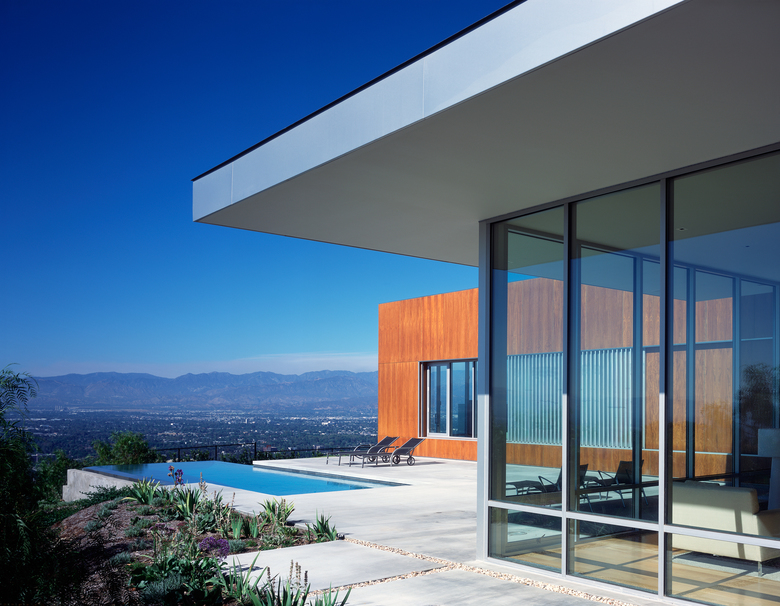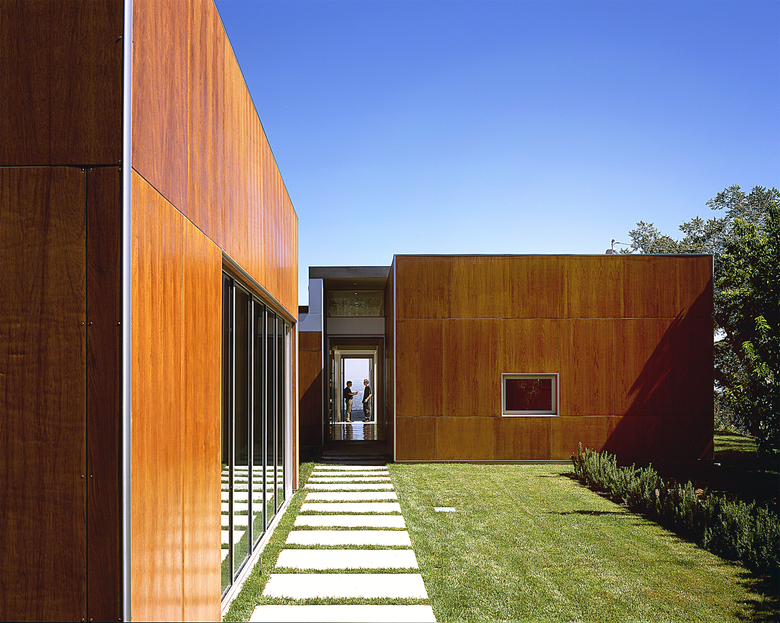Brosmith Residence
Sited high above Los Angeles’ notorious Mulholland Drive and with a panoramic view of the San Fernando Valley, the Brosmith Residence is a dynamic inside-out single-family home, and, like much of our work, inspired by the landscape and influenced by SoCal mid-century modernism.
Our clients, Sean Brosmith and his wife Hsiu-Yen, were very familiar with our work prior to awarding us the commission for their planned minimalist oasis in the hills: we had previously designed a studio for Brosmith, and had recently worked on a private residence in Bel-Air for Brosmith’s business partner, Scott Oshry (The Oshry House completed in 2003, was our first ground-up home).
Brosmith and his wife knew very much what they didn’t want: a cold front with restrictive, regimented and cramped programming; what they did want followed logically: something inviting and spacious, sleek but still a family home. Although they liked the creative sequencing and geometric design of the Oshry, they were turned off by the entirely white façade, preferring something warmer and more textural; Brosmith, who had grown up in greater New York, had fond memories of the many wood-paneled houses of Westchester County, and that became a key reference point during the design phase.
Responding to the client’s wish to capture exterior space as living space, we blurred the traditional delineation of indoor/outdoor in our outlines, using glass paneling and a unique linear plan divided into pods to permeate these natural boundaries.
The structural layout of the home is simple: a series of separate living pods flank a central spine, each connected independently and with individual indoor-outdoor courtyard space. A concourse splits the open floor plan, the garage and living/kitchen areas to the west and the various bedrooms to the east.
Designed to allow different activities and interactions to occur simultaneously without mutual disruption, the pods are arranged around the master bedroom, children’s rooms, office space, and caretaker quarters.
At the north end of the site sliding glass panels open from the master suite to an infinity pool, dramatically placed to create the impression that, instead of ending, disappears, tumbling off the lot into the ridges below and the San Fernando Valley beyond.
The task of choosing the various materials was undertaken as a collaboration with our clients, who had a very precise sense of how they wanted their home to feel. Inspired by Sean’s childhood reminiscences of a wood-paneled Westchester, their initial choice in exterior cladding was Parklex, a building panel of resin-infused wood fiber; however, after not finding a suitable finish, they settled on teak plywood, a rich wood used mainly in boat-building, and paired it with an off-white plaster. Terrazzo was used in the concourse and bathrooms, while white American oak floor all else. In the master suite a sliding louvered screen uses an aluminum frame fitted with aluminum louvers substituted for glass.
These material choices, coupled with various siting considerations and mechanical design choices contribute to the project’s overall ethos of sustainability. Passive design—a green-friendly planning technique used to take advantage of the climate to regulate and maintain a comfortable temperature in the home—was integral to this process: courtyards are located to take advantage of the site’s natural breezes, and our system of overhangs and ambiguous open spaces create a largely self-cooling structure with only an occasional need for mechanical intervention.
- Année
- 2004
